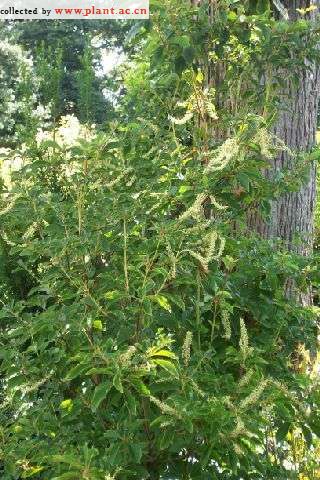Clethra barbinervisJapanese clethra
科:桤叶树科
Family:Clethraceae
属:桤叶树属
common name:Japanese clethra
introduce:Plant Type: Deciduous shrub
Family: Clethraceae
Missouri Native: No
Native Range: Eastern China to Japan
Height: 10 to 20 feet
Spread: 10 to 15 feet
Bloom Time: July - August
Bloom Color: White
Sun: Full sun to part shade
Water: Medium to wet
Maintenance: Medium
General Culture:
Grow in average, medium wet to wet, well-drained soil in full sun to part shade. Prefers part shade and consistently moist, humusy, slightly acidic soils. Should be grown in locations protected from harsh winter winds in Zone 5 where it may not be reliably winter hardy throughout.
Noteworthy Characteristics:
Japanese clethra is a large, upright, deciduous shrub or small tree which typically grows 10-20 tall and features horizontally drooping, terminal racemes (4-6" long) of pleasantly fragrant white flowers which bloom in mid to late summer and serrated, glossy, dark green leaves which turn bright yellow (sometimes red) in autumn. Flowers are very attractive to butterflies and bees. Flower spikes give way to spikes of dark brown seed capsules which persist into winter and provide continuing interest. One of the most striking features of this shrub is the polished, grayish-brown bark which may exhibit exfoliation. Flower spikes are more horizontal and drooping and less fragrant than those of Clethra alnifolia (C230).
Problems:
No serious insect or disease problems.
Uses:
Japanese clethra is an excellent, trouble-free shrub or small tree which makes an excellent specimen or small grouping for conspicuous locations in lawns, shrub borders or woodland gardens where its attractive foliage, fragrant summer bloom, good fall color and interesting winter appearance (bark and persistent seed spikes) can be showcased. Also a good shrub for moist areas along streams or on the periphery of ponds or water gardens.
